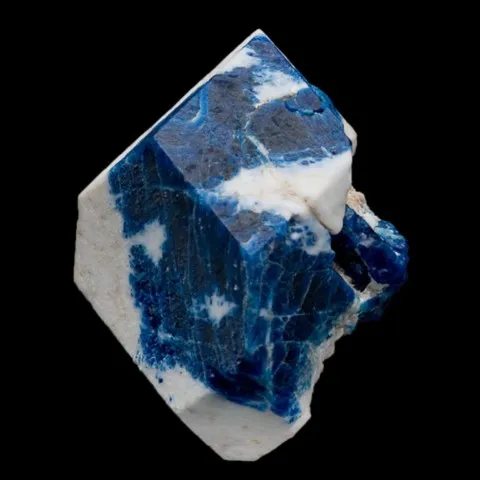HAÜYNE
Class : Silicates
Subclass : Tectosilicates
Crystal system : Cubic
Chemistry : Na3Ca(Si3Al3)O12(SO4)
Rarity : Quite common
Haüyne (or haüynite) is a fairly common accessory mineral from the feldspathoid group. Its atomic structure is identical to that of sodalite and has large gaps in which Ca, Na ions, SO4 groups, and sometimes chlorine ions are housed. It is a mineral typical of alkaline lavas deficient in silica : phonolites, sometimes undersaturated basalts (with leucite, nepheline and augite), or trachytes (with sanidine). It was named in honor of Abbot René Just Haüy, creator of crystallography and who was Professor at the Natural History Museum of Paris. Haüyne rarely occurs in corroded octahedral crystals, exceptionally tetrahedral, but more often in rounded grains giving the appearance of molten crystals. Well-formed rhomboidal dodecahedral crystals are very rare. Its sky blue to bright blue color, sometimes greenish gray or bluish white, sometimes makes it difficult to distinguish from nauseane. It is exceptionally cut for jewelry.
Main photo : Haüyne from In den Dellen quarries, Mendig, Germany © Volker Betz
Haüyne in the World
Twinning
A twin is known on {111}.
Fakes and treatments
No fakes recorded for this mineral species. Easy to confuse with other feldspathoids such as lazurite, nauseane or afghanite with which it sometimes shares deposits.
Hardness : 5.5 to 6
Density : 2.44 to 2.5
Fracture : Irregular
Streak : White to pale blue
TP : Opaque to transparent
RI : 1.494 to 1.509
Birefringence : 0
Optical character : None
Pleochroism : None
Fluorescence : Pink to orange
Solubility : Hydrochloric acid, nitric acid
Magnetism : NoneRadioactivity : None





